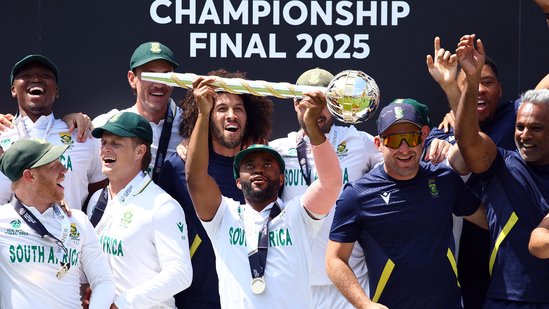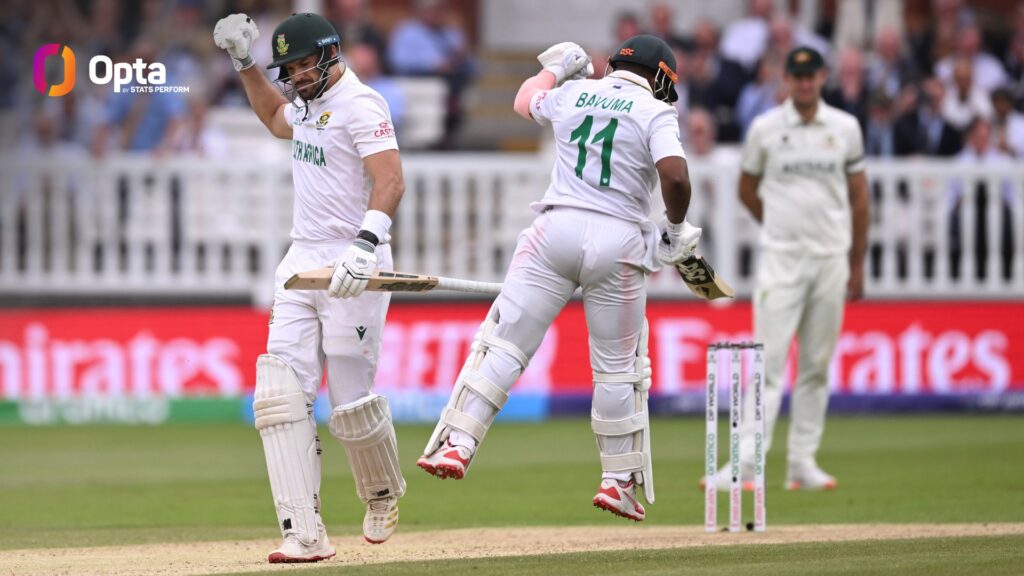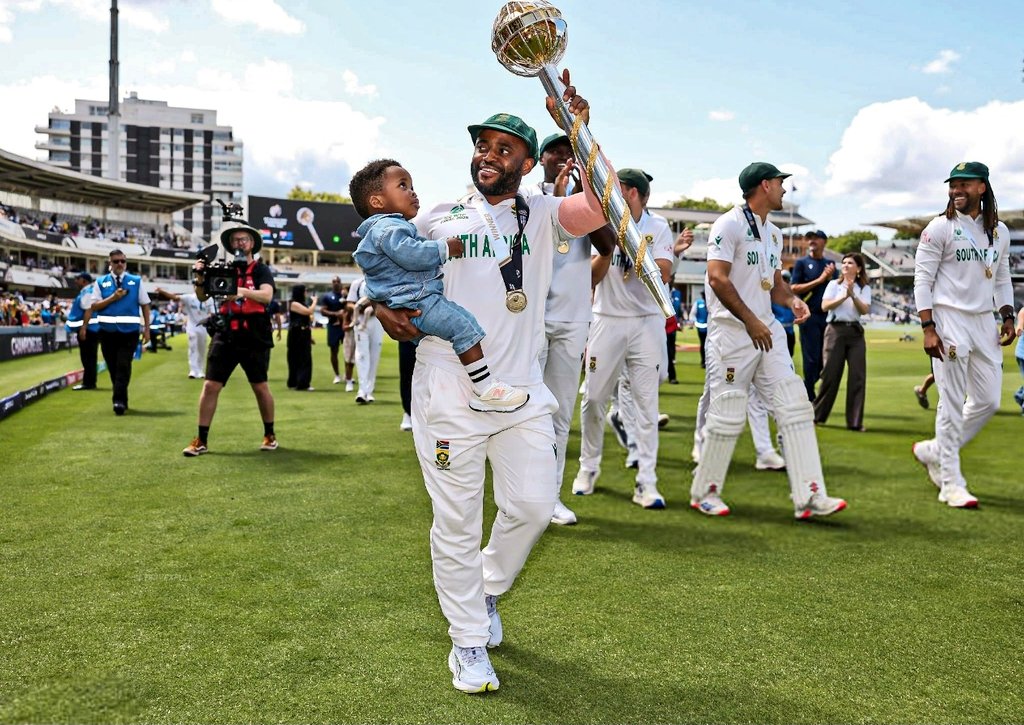
The township of Langa in Cape Town translates to “sun” in the English language. On June 14, 2025, bright sunshine smiled on both the Lord’s cricket ground and Temba Bavuma as he and the rest of his South African teammates lifted the coveted ICC World Test Championship (WTC) title. Australia, the defending champions, had more than 700 caps in their Playing XI. But as the sun wrestled with the clouds up and above in the sky, South Africa never gave up on their dream. Eventually, they usurped the fancied Australian side by five wickets.
And it was Bavuma who led from the front. Not just with the bat in hand, but also as a leader. Ultimately, the credit has to go to the captain for ensuring that South Africa didn’t lose their energy levels whenever Australia found themselves ahead in the game. When Bavuma and co. didn’t ask for a review for an LBW against Beau Webster, it seemed as if the match might just slip away from South Africa’s grasp. However, they fought back, taking the key wickets of Webster and Steve Smith. In fact, Australia lost their last five wickets in the first innings for 20 runs.
Australia, though, once again gained ascendancy, snuffing South Africa out for a mere 138. It was now time for the South African pace bowlers to lift the side’s sagging spirits. Their incisive spells resulted in Australia slipping to 73 for 7. But then, Australia’s tail wagged and they finished up with the lead of 281. At that juncture, Australia seemed to be galloping towards victory, but there was another twist in the tale waiting to happen. Bavuma, in the company of Aiden Markram, mounted a comeback.

There was more to Bavuma’s knock than just 66 runs. When he was batting on six, Bavuma sustained a hamstring injury. On the outfield, he was attended by the physio and the treatment lasted for a while. Thankfully, for Bavuma, only two overs were left for the tea interval. As Ashwell Prince, the batting coach said: “We had to make a big call whether he continues to bat and how it will affect his stroke-play, how that might affect Aiden’s rhythm.
“If twos are being turned into one [or] they can’t run the twos or the threes. Both of them were adamant that Temba was going to continue. He wanted to continue. Aiden was adamant that the partnership is the key. Obviously, had [Tristan] Stubbs gone in, we would have still had Temba’s wicket intact, but you start a new partnership. They were feeling pretty good and they wanted to continue.”
So, Bavuma continued to bat in the final session. Yes, he was hobbling a bit between the wickets, but determination was writ large on his face. He turned out to be the perfect foil for Markram, blending singles with straight drives and sweeps. The difference in the duo’s height also flummoxed the opponent as the Australian pace troika had to frequently change their lengths. For the shorter Bavuma, the length had to be fuller as the stride was not a big one. For the taller Markram, they had to pull back the length ever so slightly.

When Bavuma was dismissed by Pat Cummins, South Africa were within touching distance of overhauling the target. After leading from the front, all that Bavuma could do was watch his teammates go about chasing down the target from the Lord’s balcony. When Tristan Stubbs fell to Mitchell Starc, there might have been a few jangling nerves in the camp. Markram, however, never really lost his single-minded focus. When Kyle Verreynne hit the winning runs, it was time to celebrate.
Not surprisingly, Bavuma couldn’t control his tears of joy and he tried to cover his face while the rest of his teammates held their hands aloft in ecstasy. The ICC trophy jinx that lasted for 27 years had been broken. And it was Bavuma’s team that had brought glory to an entire nation. The same Temba Bavuma who grew up playing street cricket. Incidentally, he ended up saying at the presentation ceremony: “I never pictured myself playing here at Lord’s. I could only fantasise about it.”
The man from Langa had his fairytale moment in the sun at St John’s Wood.



